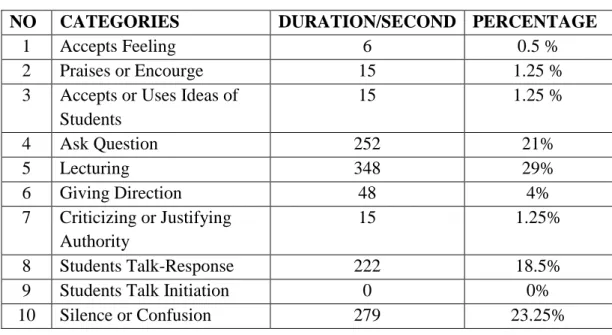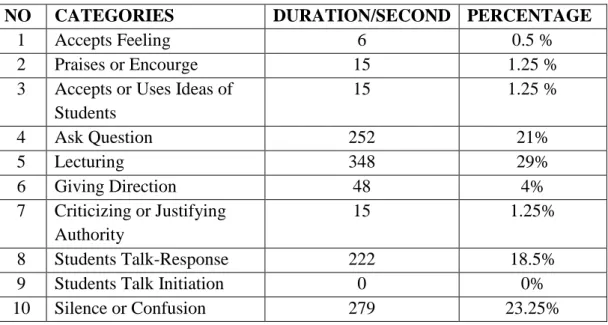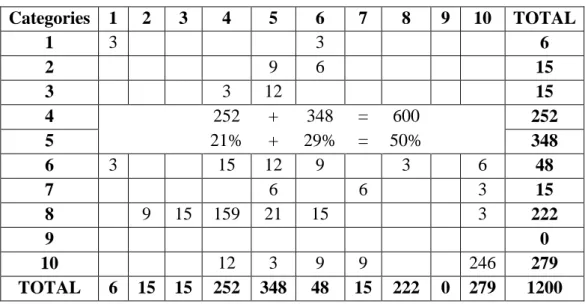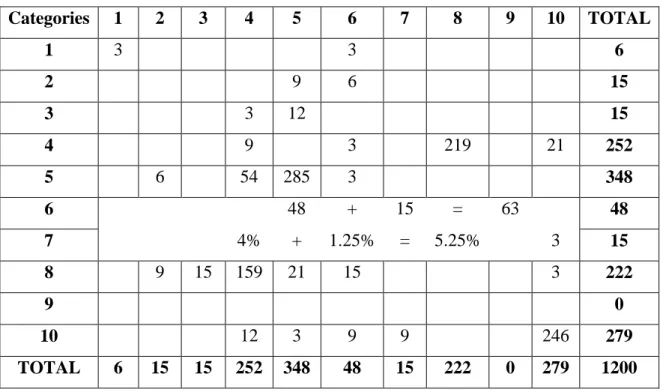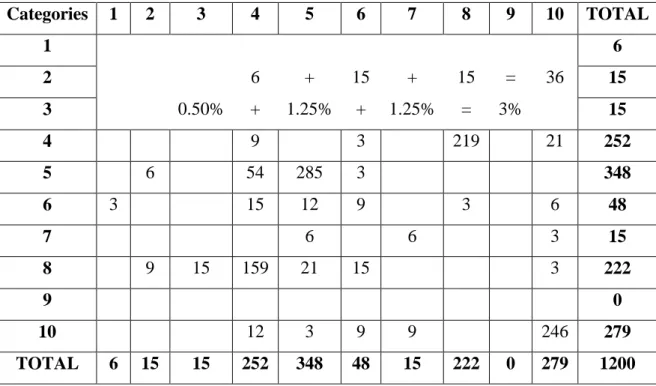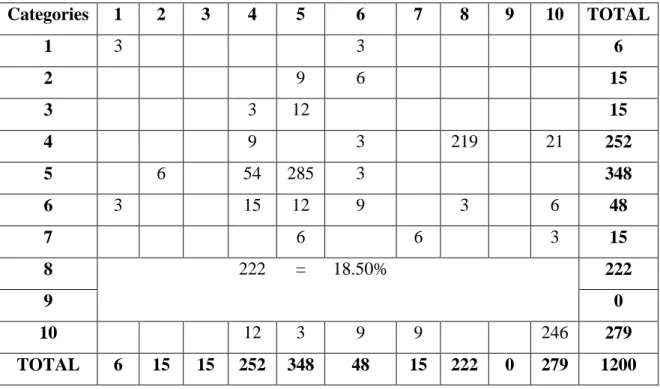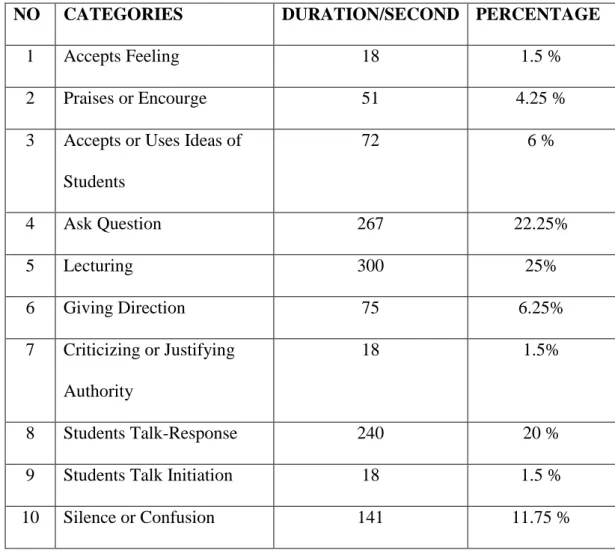An Analysis of Classroom Interaction in English as a Foreign Language (EFL) Class 11 of SMAN 1 Bengkulu Tengah. It aims to understand the classroom interaction process and recognize the classroom interaction pattern in an English as a Foreign Language (EFL) class in the 11th grade of SMAN 1 Bengkulu Tengah.
Background of the problem
In addition, EFL students are required to practice the language in the classroom as much as they could. This means that many EFL teachers do not ask students to practice the language.
Identification of the problem
How is teacher-student interaction during teaching and learning in the 11th grade classroom in SMAN 1 Bengkulu Tengah. Classroom interaction is interactions between teacher and students that occur in the classroom during the teaching and learning process (Walsh, S, 2012: 13). This means that the teacher is the central person who gets the students to participate actively and purposefully in the classroom.
Teaching-learning situations in the classroom involve interaction between teacher and student. This result in the second meeting indicated that the teacher was compromising his dominance in the classroom. During the first observation meeting with the eleventh grade students of SMAN 1 Bengkulu Tengah, the teacher explained about descriptive text.
In the second session, the teacher used a different style than technique to engage the students to participate in the lesson. In this research, the researcher used an open-ended question to understand the teacher's performance in classroom interaction activity. Interviewer: "If the students don't understand, what does the teacher do?" (Jika ada siswa yang kurang atau tidak paham tepadang materi leijuan, apa yang belikanta guru lakukan?).
Pewawancara: “Jika jawaban siswa benar atau salah, bagaimana tanggapan guru?” Mereka merasa guru memberikan kebebasan dan waktu yang cukup untuk berdiskusi di kelas. Pewawancara: “Bagaimana cara guru menggunakan waktu belajar di kelas secara efisien?” (Bagaimana cara guru memanfaatkan waktu belajar mengajar di kelas secara efisien (berimbang antara menjelaskan, bertanya, memberi tugas, berdiskusi, dan sebagainya)?).
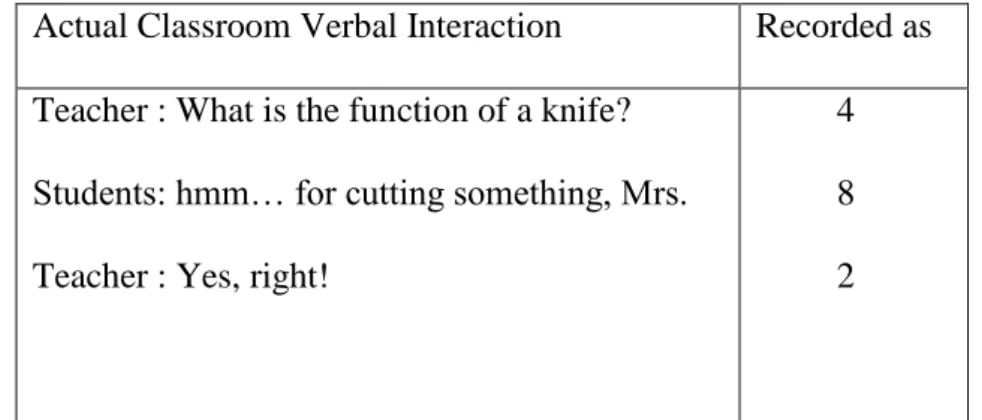
Limitation of the problem
Research Question
What is the most dominant pattern used in classroom interaction in the 11th grade of SMAN 1 Bengkulu Tengah.
Objective of the Study
Significant of the Study
Definition of Key Term
Definition of Classroom Interaction
This means that the classroom interaction will make the students have a good relationship with each other. Besides that, good interaction in the classroom depends on how the teacher allows the students to talk to each other.
Process of Classroom Interaction
Learning tends to be seen not only as a constructive process that takes place in the mind of the learner, but also as a process of meaning-making and enculturation in social practices. In short, the use of appropriate strategies requires an understanding of the function of a question in relation to what is being taught.
Theory of Foreign Language (EFL) Classroom
Definition of Foreign Language (EFL) Classroom
Previous Study
She used three instruments to analyze the data; Flanders Interaction Analysis (FIA) to identify classroom interactions, teaching effectiveness items based on Walberg's theory and the Likert scale to measure student opinion results from the questionnaire. In addition, the teacher mostly took a controller role in the classroom as she often led the flow of interaction.
RESEARCH METHOD
Place and Time
In this interview, the researcher asked five questions to the students and three questions to the teacher. This research explored classroom interaction representing teacher performance and the interaction between classroom elements (teacher-student, student-student, and student-teacher) in the English as a Foreign Language (EFL) classroom. In the second meeting, the teacher explained about "Congratulations to someone." The observation period used in this encounter was the same, 20 minutes or 1200 seconds.
This meant that the teacher tried to adapt more to respect the students' ideas and opinions. The teacher – students interaction during the teaching and learning process in the 11th grade classroom in SMAN 1 Bengkulu The 11th grade classroom process in SMAN 1 Bengkulu Tengah. On the other hand, combining languages was not the only change the teacher made in this first meeting.
Kualitas interaksi di kelas EFL pertemuan kedua masih didominasi oleh guru. Di sisi lain, guru memberikan waktu lebih banyak kepada siswa untuk menyelesaikan tulisannya dan membacanya secara komprehensif. Pewawancara : “Bagaimana cara guru memanfaatkan waktu belajar mengajar di kelas secara efisien?” (Bagaimana cara guru menggunakan waktu kelas secara efisien?) (Bagaimana cara guru menggunakan waktu belajar mengajar secara efisien di kelas (porsi antara penjelasan, soal, tugas, diskusi, dll seimbang)?) .
Pewawancara: “Apakah guru menghabiskan banyak waktu untuk menjelaskan dan mengajukan pertanyaan kepada siswa?” (Apakah guru menghabiskan banyak waktu di kelas untuk menjelaskan materi dan mengajukan pertanyaan kepada siswa?).
Subject of Research
Instrument of Research
- Observation Sheets
- Interview Analysis
Data Collection Technique
- Observation
- Interview
In relation to this research, the main data is, to analyze the classroom interaction, the researcher used observational document analysis and questionnaire in SMAN 1 Bengkulu Tengah to collect data as follows. Robson said that "what people do can be different from what they say they do, and observation provides a reality check," and Cooper and Schindler explained that observation allows the researcher to take a fresh look at everyday behavior , which could otherwise be taken for granted, expected or remain unnoticed. The researcher observed the interaction between the teacher and. In addition, the researcher also observed the interactional performance of the teacher during the lesson, taking into account Steve Walsh's classroom discourse characteristics theory.
Camera video was placed in the best position to capture classroom interaction, while the researcher sat in the back of the classroom to take notes on student responses that would otherwise not be captured on camera. The researcher interviewed four students and an English teacher to find data on their perspectives before and after the implementation of the action and also to validate the results. This interview is an open interview in which participants can express their experiences as best as possible, without being limited by any perspective of the researcher or the findings from previous research.
During the interview process, the researcher recorded all the conversations while the interviews were conducted with an audio recorder. After the researcher obtained the data from the interview, he continued the data in the process of data reduction in data analysis techniques.
Technique of Data Analysis
- Data Reduction
- Data Display
- Conclusion
Additionally, zero student initiation during learning indicated that the teacher was the one and only orchestrating the classroom interaction. But not only when the students made a mistake, the teacher did the same, the students' answer was also true. On the other hand, not everything was perfect, the limited time limited the teacher to offer opportunities to the students.
Okay, while you write, I will read the presence. the teacher checked the students'. participation in 186 .. the teacher was waiting for the students to finish their note.
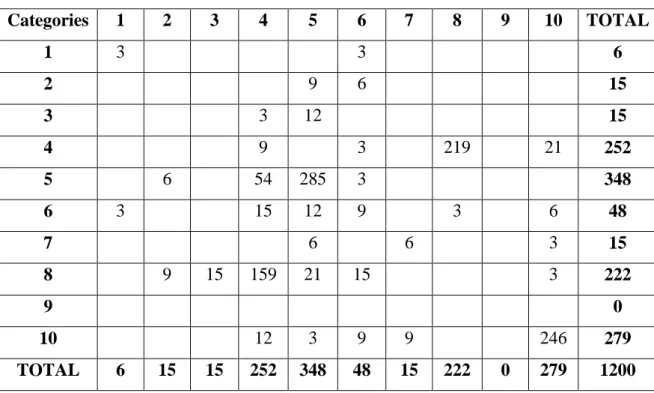
RESULT AND DISCUSSION
The teacher – students‟ interaction during teaching and learning process
The teacher started this session by working on the board for about 230 seconds while the students focused on their writing. The teacher was responsible for ensuring that his students did not lose the material he was imparting. At the third meeting, the students received more support or suggestions and even an order from the teacher to listen carefully to him during class.
Interviewer: "Does the teacher start and finish the teaching-learning process on time?" (Apaka guru tepat waktu dalam kekemung dan kekei proces belagar mengangar?) Most students agreed that the teacher started and finished the learning teaching activity on time. The teacher chose to guide the students when they tried to answer his question by naming the first word.
Secondly, it is also better if the teacher uses media to support the learning-teaching process, as the teacher did during the second meeting. 3 The observer must be overly concerned about his own biases or about the teacher's intentions.
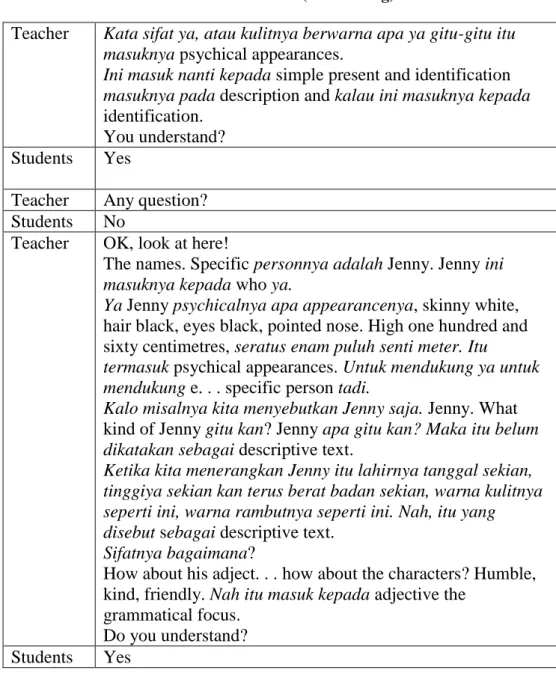
CONCLUSION AND SUGGESTION
Suggestion
Therefore, there were some suggestions for the teacher to realize effective classroom interaction, so that the teacher can develop his teaching method. Firstly, it is better if the teacher not only spends the class time explaining the content, but also provides time for discussion and inserts more jokes or interludes during the class, so that the students can explore their thinking and enjoy the educational teaching . process. Study of teacher-student interaction in teaching process and its relationship with student achievement in primary schools, Malaysia. The social sciences.
There are two general structures for descriptive text. the first is identification, describe where or who. and the second is description, description of a part or. Ucapan selamat hanya boleh diberikan pada saat suasana ba.. jangan pernah ucapkan, “selamat ya ayah kamu. the students laughed). How are you this morning? how are you this morning. the students laughed) Okay,.
Students Teacher Students Teacher Students Teacher Students Teacher Students Teacher Students Teacher Students Teacher Students Teacher. Karena diawali oleh auxiliary do, kalau diawali auxiliary do, maka goes nya tetap. verb one, always preceded by auxiliary do look at the second singular sentence. it did our help,. so we you can verb one, it preceded by verb one s,. in positive in negative, we will not use. and then the verb one there are no changes in the verb,. in positive the verb is preceded by a. Students Teacher Students Teacher Students Teacher Students Teacher Students Teacher Students Teacher Students Teacher Teacher Students Teacher. 2 If the primary tone of teacher's behavior was consistently direct, or consistently indirect, we do not move to the opposite classification unless a clear indication of shift is given by the teacher.
6 When the teacher calls a child by name, the observer usually records as a 4. 7 If there is a noticeable period of silence, record a 10 for every 3 seconds of silence, laughter, work on the board, etc.
